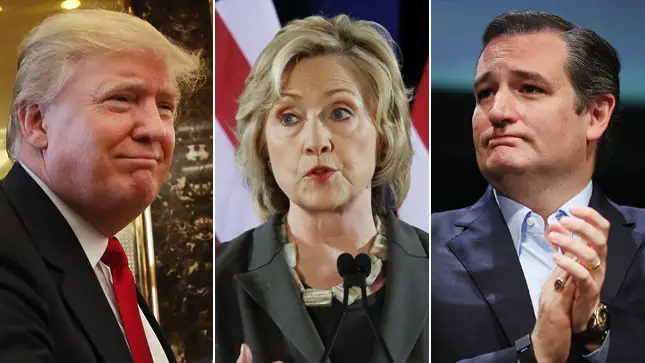The latest polling out of Iowa shows a tightening contest in both parties as the caucus draws closer. There is a discrepancy between what the polling outfits consider as “likely caucus goers,” voters who will more than likely show up, and “potential caucus goers,” voters who may or may not show up but are registered to participate.
Report from AOL News:
In Iowa, which holds its caucuses on Feb. 1, Ted Cruz leads Donald Trump by four points among likely caucus-goers, 28 percent to 24 percent – within the poll’s margin of error of plus-minus 4.6 percentage points. They’re followed by Marco Rubio at 13 percent and Ben Carson at 11 percent. No other Republican candidate gets more than 5 percent of the vote.
Yet among the larger universe of potential Iowa caucus-goers, Trump actually leads Cruz by two points, 26 percent to 24 percent, suggesting that a larger turnout could benefit Trump in the state. (Back in October’s NBC/WSJ/Marist poll, Trump was at 24 percent among potential caucus-goers, Carson at 19 percent, and Cruz and Rubio at just 6 percent.)
The difference maker will be turnout and which candidate can get more motivated voters to the polls. Cruz has pocketed some big endorsements in the state, and the constituency is a natural fit for him, especially with the evangelical Christian leaning of the Iowa GOP. On the other hand Trump, has the “Trump” factor and could easily mobilize across the state as he has been doing in recent months. However, is Iowa even worth fighting for since in the last two cycles, it hasn’t picked the candidate who would eventually become the nominee? I’m sure Trump is already preparing for the scenario to heavily discount Iowa and focus on New Hampshire if the state is heading in the direction of Cruz.
On the Democratic side, the race is surprisingly tight, also from AOL News:
On the Democratic side, frontrunner Hillary Clinton holds just a three-point lead among likely voters over Bernie Sanders, 48 percent to 45 percent, while Martin O’Malley gets 5 percent.
But among potential Democratic caucus-goers, Clinton’s advantage grows to six points, 49 percent to 43 percent. (In October, Clinton’s lead here was 11 points, 47 percent to 36 percent.)
I’m very shocked at Hillary’s three point lead, it hasn’t been that close in Iowa up to this point. Sanders has been doing well in New Hampshire, but typically has trailed in Iowa. The good news for Clinton is that the mix of “likely” and “potential” caucus voters all skew in her direction, meaning that if more voters turnout, she’ll just end up doing better. Sanders can be hoping for a low turnout caucus where he might stand a shot at the upset.
However, for Sanders to be gaining ground at this stage in the game must be worrying the Clinton campaign. This race will be very interesting over the next few weeks.
Donate Now to Support Election Central
- Help defend independent journalism
- Directly support this website and our efforts
